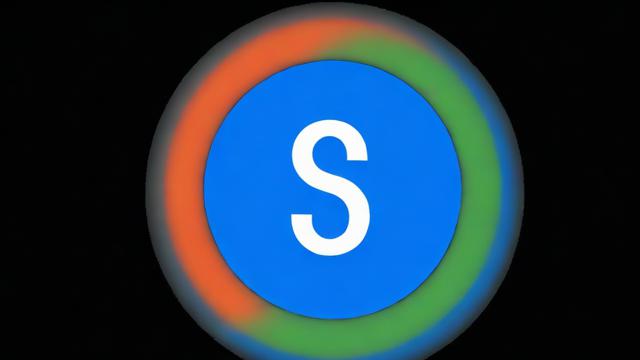Linux Depth: Exploring the Intricacies of a Versatile Operating System

Linux, an open-source operating system kernel, has evolved into one of the most significant players in the world of computing. Its depth and versatility have made it a preferred choice for various applications, ranging from personal desktops to enterprise servers. This article delves into the intricate details of Linux, exploring its architecture, distributions, and diverse use cases.
The Architecture of Linux
At the core of Linux is its kernel, which acts as the bridge between the hardware and the software on top of it. The kernel manages resources, processes, and communication between different parts of the system. Here are some key components of the Linux architecture:
1、Kernel Space: This includes the actual Linux kernel, which handles low-level operations such as memory management, CPU scheduling, and device drivers.
2、User Space: This comprises all the user applications and services that run on top of the kernel. It includes libraries, file systems, and other utilities.
3、Shell: The command-line interface (CLI) that allows users to interact with the system by entering commands. Popular shells include Bash, Zsh, and Ksh.
4、System Initialization: Tools like Systemd or SysVinit are used to start and manage system services during boot time.

5、Package Management: Systems like APT (Debian-based), YUM/DNF (Red Hat-based), and Pacman (Arch-based) help in installing, updating, and managing software packages.
Major Linux Distributions
Linux is distributed through various distributions, each tailored for specific needs and preferences. Some of the most popular Linux distributions include:
| Distribution | Base Package Manager | Common Use Cases |
| Ubuntu | APT | General purpose, Desktop, Server |
| Fedora | DNF | General purpose, Development, Workstation |
| CentOS | YUM | Server, Enterprise Solutions |
| Debian | APT | General purpose, Server |
| Arch Linux | Pacman | Customization, Advanced Users |
| Red Hat Enterprise | YUM | Enterprise Solutions, Business Environments |
| SUSE Linux Enterprise | YUM/Zypper | Enterprise Solutions, Business Environments |
Each distribution comes with its own set of tools, package managers, and default configurations, making them suitable for different types of users and environments.
Diverse Use Cases of Linux
Linux's flexibility and robustness make it ideal for a wide range of applications. Here are some notable use cases:
1、Server Environments: Linux powers many of the world's web servers, database servers, and cloud infrastructure due to its stability and security.

2、Desktop Computing: With distributions like Ubuntu and Fedora, Linux provides a user-friendly environment for everyday computing tasks.
3、Development and Testing: Linux offers a rich set of development tools and environments, making it a favorite among software developers and testers.
4、Embedded Systems: Due to its lightweight nature and customizable kernel, Linux is commonly used in embedded systems like routers, smartwatches, and IoT devices.
5、High-Performance Computing (HPC): Linux is widely used in HPC clusters because of its efficiency and scalability.
6、Virtualization: Linux supports various virtualization technologies like KVM, Xen, and Docker, making it ideal for creating and managing virtual machines and containers.
Security Features in Linux
Security is a paramount concern in any operating system, and Linux is no exception. Here are some key security features provided by Linux:
1、User Privileges: Linux uses a robust permission model where files and directories can be assigned specific read, write, and execute permissions for different users and groups.
2、SELinux and AppArmor: These are mandatory access control frameworks that provide additional security layers by enforcing policies beyond traditional discretionary access controls.
3、Firewalld and Iptables: These are firewall management tools that allow administrators to control incoming and outgoing traffic based on predefined rules.
4、Secure Boot: Many modern Linux distributions support Secure Boot, which helps ensure that the system boots using only software that is trusted by the OEM.
5、Regular Updates: Linux distributions frequently release updates to patch vulnerabilities and improve security features.
Community and Support
One of the strengths of Linux is its vibrant community and the extensive support available. Here are some ways to get involved or seek help:
1、Forums and Mailing Lists: Websites like Stack Overflow, Reddit, and dedicated Linux forums offer platforms to ask questions and share knowledge.
2、Documentation: Most distributions come with comprehensive documentation and user manuals. Websites like the Linux Documentation Project also provide valuable resources.
3、Conferences and Events: Events like LinuxCon, Open Source Summit, and regional Linux user group meetings provide opportunities for networking and learning.
4、Contribution Opportunities: Contributing to open-source projects is a great way to give back to the community. This can be done by fixing bugs, writing documentation, or developing new features.
Future Trends in Linux
As technology continues to evolve, Linux remains at the forefront of adapting to new trends and innovations. Some future trends in Linux include:
1、Containerization and Microservices: With the rise of cloud computing and DevOps practices, containerization technologies like Docker and orchestration tools like Kubernetes are becoming increasingly important.
2、Artificial Intelligence and Machine Learning: Linux is playing a crucial role in AI/ML development with frameworks like TensorFlow and PyTorch being optimized for Linux environments.
3、Edge Computing: As more devices become connected, edge computing is gaining prominence, and Linux is well-suited for these resource-constrained environments.
4、Real-Time Systems: Advancements in real-time capabilities are making Linux a viable option for mission-critical applications in industries like automotive and aerospace.
FAQs
Q1: Is Linux free to use?
A1: Yes, Linux is free to use. It is an open-source operating system, which means you can download, modify, and distribute it without paying any licensing fees. However, there may be costs associated with certain distributions or professional support services.
Q2: Can I run Windows applications on Linux?
A2: While Linux natively runs ELF binaries, there are several ways to run Windows applications on Linux:
Wine: A compatibility layer that allows you to run Windows applications on Linux.
Virtual Machines: Software like VirtualBox or VMware can create a virtual Windows environment within Linux.
Dual-Booting: You can install both Linux and Windows on your computer and choose which one to boot into.
小伙伴们,上文介绍了“linux depth”的内容,你了解清楚吗?希望对你有所帮助,任何问题可以给我留言,让我们下期再见吧。